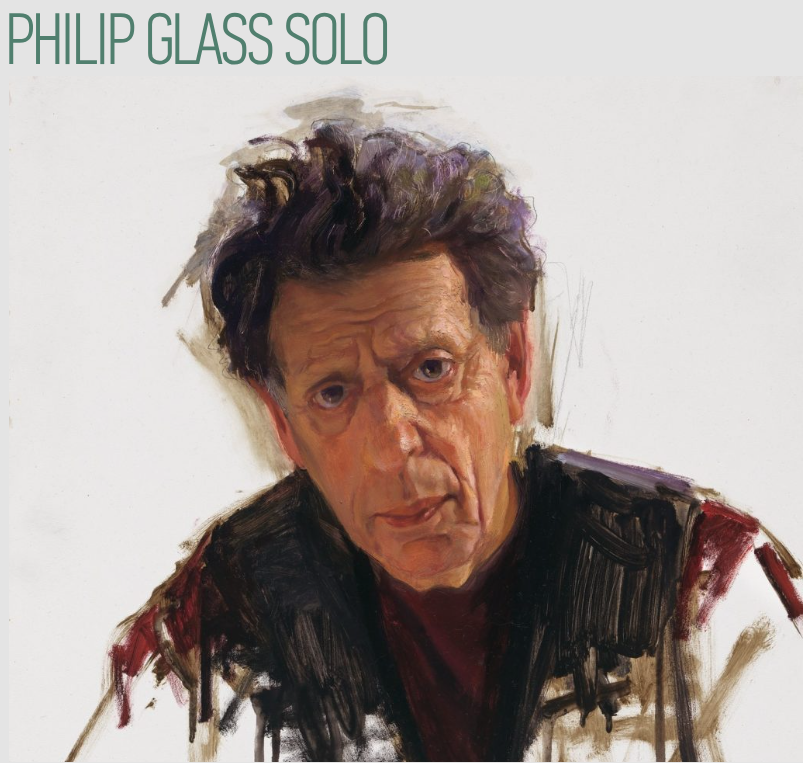Philip Glass releases on OMM “Philip Glass Solo”, a new vision of his early piano pieces, recorded during his confinement.
In addition to the extensive collection of records in which an also large number of performers of the most varied formats review the musical production of Philip Glass, the composer himself has released today, through the label he owns, Orange Mountain Music, Philip Glass Solo, a record in which Glass performs seven of his most emblematic early pieces on the piano.
Philip Glass Solo was recorded in the midst of the covid-19 pandemic, when, instead of a busy schedule of tours and premieres, the composer found himself, like all of us, locked up at home with his relatives. The musician devoted some of that time to revisiting some of his older piano pieces, so that Philip Glass Solo can be considered his most personal album of the last twenty years, or perhaps even of his entire career. As the composer himself explained on his website in November last year, when he announced the release of the album, “from 2020-2021, I had time at home to practice the works I have played for many years. This record is both a time capsule of 2021, and a reflection on decades of composition and practice. In other words, a document on my current thinking about the music. There is also the question of place. This is my piano, the instrument on which most of the music was written. It’s also the same room where I have worked for decades in the middle of the energy which New York City itself has brought to me.”
“I’d been touring for almost half a century, but suddenly, for the first time in years, I had time to play the piano,” he told Apple Music Classical, which brought the album’s release a week ahead of schedule via iTunes. When I think about my previous music, I don’t write music like that anymore, so I’m curious about the person who wrote it. I’m not that person anymore. We all change, it’s inevitable. I’m not that person anymore, not as a composer, not as a performer, not even as a listener”.
Philip Glass Solo is the result of many hours sitting at his beloved Baldwin grand piano – the same one he had played on his 1989 album Solo Piano – but this time the performances are markedly different and have an almost improvisatory character compared to the 1989 pieces, as if they were being composed at that very moment.
The disc opens with Opening, the first movement from his 1982 album Glassworks, the album with which Glass really became a popular composer. It is followed by Mad Rush, a 1979 piece originally entitled Part Four, which was part of a choreography by Lucinda Childs. This is the longest piece on the new album and is up to three minutes longer than the original version, which was almost fourteen minutes long. Glass again explains to Apple Music Classical that this is due to the complex relationship between composer and performer: “when I was in music school, they almost uniformly told composers not to perform, but interpretation can make you think of the music in a way you wouldn’t have if you were just the composer. When you are an interpreter yourself, you understand the possibilities of the music in a different way. And they sometimes appear to you in real time.”
Next come four of the five Metamorphoses – number IV is missing – which he composed in 1988 for a theatrical version of Kafka’s Metamorphosis and which were originally included on the aforementioned 1989 Solo Piano album. The seventh and final piece on the disc is Truman Sleeps, the most recent of the compositions included here, dating from 1998 and the main theme of the soundtrack to Peter Weir’s film The Truman Show, which Glass himself played a cameo on the piano in one scene of the film.
Glass assures us that there is no doubt that the timbre of the piano also influences the way performances are shaped. Glass’s Baldwin piano has been played constantly for 35 years, and in Metamorphosis I or in the finale of Truman Sleeps you can hear how the fragile treble notes battle the instrument’s resounding midrange. “I have done most of my composing on it or next to it and it’s inevitable that the sound of the instrument you play every day, and the room that you are in, must in some way influence how you hear”.
The album’s cover features a reproduction of an oil study on masonite that the Puerto Rican painter Luis Álvarez Roure made of him in 2016 for a larger portrait, which is part of the collection of the National Portrait Gallery at the Smithsonian Institution in Washington D. C.
